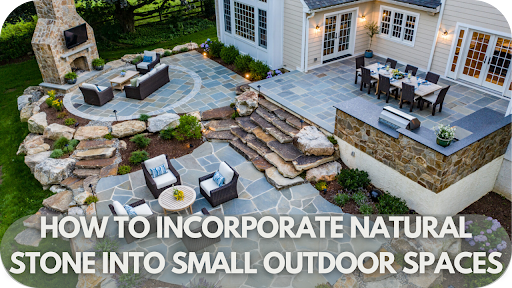
Choosing the right location to lay granite pavers can be challenging due to the many options available.
Without proper guidance, you might install them in less suitable areas, leading to issues like reduced durability or aesthetic mismatch.
This article will guide you through the best places to lay granite pavers, ensuring you make informed decisions that enhance your outdoor spaces’ functionality and beauty.
Discover the ideal locations to maximise the benefits of your granite pavers.
Key Areas to Use Granite Pavers
1. Driveways
Granite pavers are an excellent choice for driveways due to their exceptional durability and ability to withstand heavy loads. They resist cracking and can handle the weight of vehicles without damage.
When choosing granite pavers for driveways, opt for a thickness of at least 3 cm to ensure strength.
A flamed or bush-hammered finish enhances slip resistance, making it safer for pedestrians and vehicles.
2. Patios and Entertainment Areas
Granite pavers enhance the beauty and functionality of patios and entertainment areas, providing a luxurious and durable surface that can withstand outdoor elements.
Integrate granite pavers with other landscape elements, such as stone fire pits, seating walls, and garden beds, to create a cohesive and inviting outdoor space.
The variety of colours and finishes allows customisation to match your design preferences.
3. Walkways and Garden Paths
Granite pavers create inviting and aesthetically pleasing walkways and garden paths. Their natural beauty and range of textures and colours charm any landscape.
Choose pavers with a flamed or bush-hammered finish for safety and aesthetic harmony to prevent slipping.
Design considerations include using smaller pavers for intricate pathways and larger ones for broader, more formal walkways.
4. Pool Surrounds
Granite pavers are ideal for pool surrounds due to their slip- and water-resistant properties. The flamed finish provides a textured surface that reduces the risk of slipping when wet.
Granite’s ability to withstand water and chlorine ensures longevity and easy maintenance.
Examples of pool designs featuring granite pavers include sleek, modern pool decks with light-coloured pavers to reflect heat and create a cool, comfortable surface.
5. Public Spaces and Commercial Use
Due to their durability and low maintenance, granite pavers are frequently used in public spaces and commercial applications such as parks, plazas, and business exteriors.
They can withstand heavy foot traffic and harsh weather conditions, making them a cost-effective choice for large-scale projects.
The variety of finishes and colours available allows for creative and visually appealing designs that enhance the functionality and aesthetics of public and commercial spaces.
Design Tips for Laying Granite Pavers
Designing with granite pavers can transform any outdoor space into a sophisticated haven. Consider these expert tips to achieve the best results.
Firstly, plan your layout meticulously. Granite pavers come in various sizes and patterns, so choose a design that complements your space. A staggered or herringbone pattern adds visual interest and enhances durability.
Next, pay attention to the spacing. Uniform gaps ensure stability and allow for natural expansion and contraction. Use spacers, typically between 3 and 5 millimetres, to maintain consistent joints.
Level the base properly. A well-prepared base with compacted gravel and sand prevents uneven settling and water pooling. Ensure a slight slope for drainage, guiding water away from structures.
Consider the edges. Secure the perimeter with edge restraints to keep pavers in place and maintain the design’s integrity. This step is crucial for preventing movement over time.
Finally, seal the pavers. Sealing granite enhances its natural beauty and protects it from stains and weather damage. Choose a sealant appropriate for granite to ensure long-lasting results.
Learn how to lay pavers properly from our article. How do you lay granite pavers?
Installation Advice
Installing granite pavers requires precision and attention to detail for a flawless finish. Begin by preparing the site thoroughly. Excavate the area to a depth of 15-20 centimetres, ensuring it is clear of any debris or vegetation. Compact the soil to create a stable foundation.
Next, lay a base layer. Spread and compact a 10-15 centimetre crushed stone or gravel layer. This base provides drainage and prevents the pavers from shifting. Follow with a 2-3 centimetre coarse sand, smoothing it out to create a level surface.
Position the pavers carefully. Start at one corner, laying the pavers in your chosen pattern. Use spacers to maintain uniform gaps, typically 3-5 millimetres. Frequently check for levelness using a spirit level and adjust as needed by adding or removing sand.
Edge restraints are crucial. Install these along the perimeter to keep the pavers in place and maintain the integrity of the design. Secure them firmly to prevent any movement over time.
Finally, fill the joints. Sweep fine sand into the gaps between the pavers, ensuring they are completely filled. This locks the pavers in place and prevents weed growth. Compact the entire area once more to ensure stability.
Maintenance and Care
Maintaining granite pavers is essential for preserving their beauty and longevity. Regular cleaning is crucial. Sweep the surface frequently to remove dirt and debris.
Use a mild detergent mixed with water and a stiff brush for deeper cleaning. Avoid harsh chemicals or high-pressure washers, as these can damage the stone.
Sealing the pavers is highly recommended. Apply a high-quality stone sealant every 1-2 years to protect against stains, moisture, and weather damage. Ensure the pavers are clean and dry before applying the sealant, following the manufacturer’s instructions for the best results.
Address stains promptly. Spills should be cleaned up immediately to prevent staining. For oil stains, use a poultice or a specialised stone cleaner. Avoid using acidic cleaners, which can etch the surface of the granite.
Weed control is also important. Regularly inspect the joints and remove any weeds that may sprout. Applying a weed inhibitor can help prevent growth.
Monitor for shifting or settling. Check the pavers periodically to ensure they remain level. If any pavers become loose or uneven, they should be lifted, the base material adjusted, and the pavers reinstalled.
For more information on how to maintain and care for a paver read this: The Complete Guide to Caring for Your Granite Pavers.
Conclusion
Granite pavers are a versatile and durable choice for any outdoor area. From driveways to garden paths, their elegance and resilience make them ideal. Contact Splendour In Stone for professional advice and top-quality granite pavers tailored to your project needs. Transform your outdoors with timeless beauty.
More To Explore

Modern Stone Wall Cladding Ideas for Your New Year Renovation
Are you thinking of giving your home a fresh look for the New Year? Imagine stepping into a space where every wall becomes a statement,

How to Incorporate Natural Stone into Small Outdoor Spaces
Imagine stepping into your compact outdoor space and feeling like you’ve entered a designer’s dream. Small doesn’t have to mean dull, and the transformation possibilities


